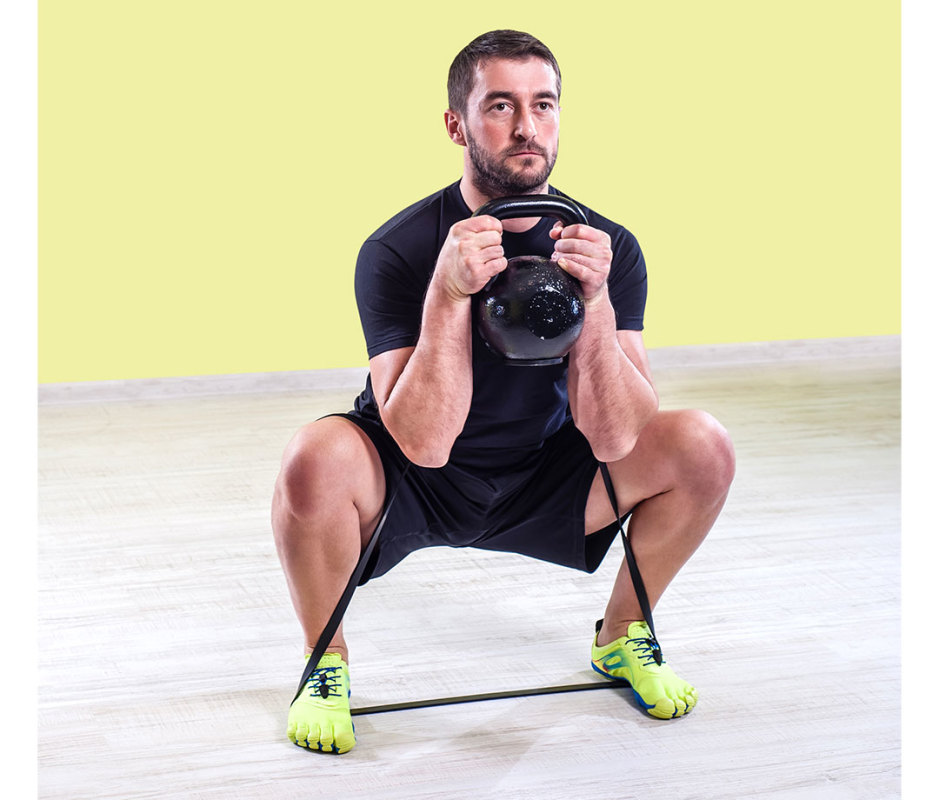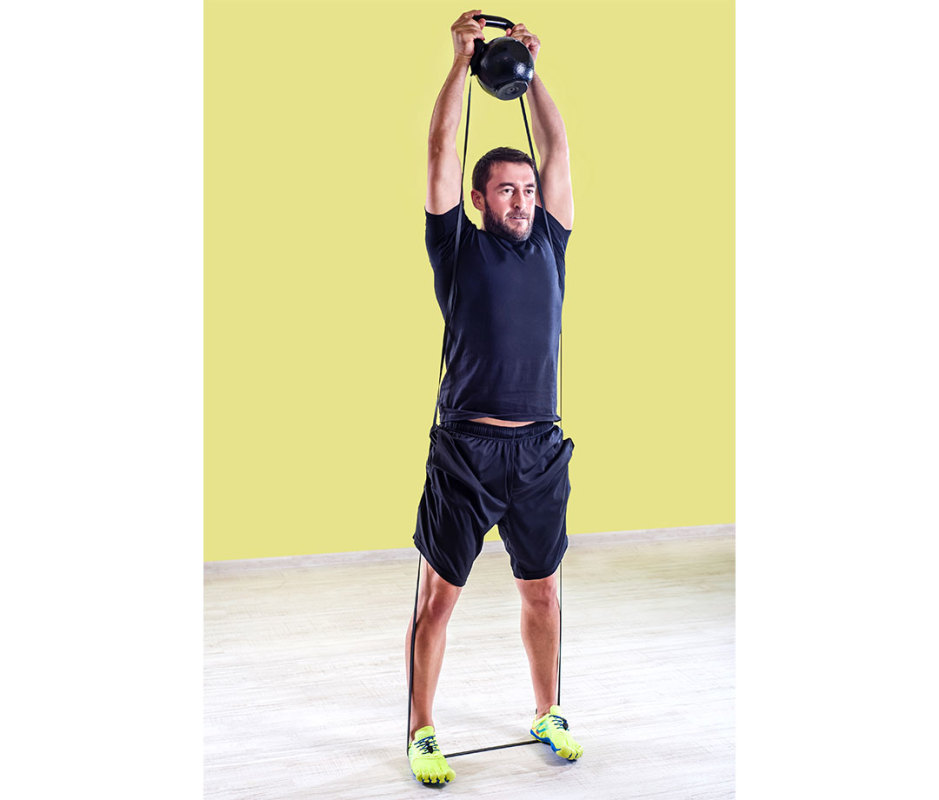Physical Address
304 North Cardinal St.
Dorchester Center, MA 02124
Physical Address
304 North Cardinal St.
Dorchester Center, MA 02124

Basic back squats are a pillar of strength. And while it’s an important compound movement, it mainly focuses on your posterior chain. Not to mention, you need access to a gym or Smith rack at home. So, if you want to turn this leg exercise into a full-body power move—no barbell necessary—allow us to introduce the banded goblet squat.
Back squats predominantly load the back (hence the name), while lighting up the posterior chain—particularly the glutes and hamstrings—and engaging the quads and core for stability. Banded goblet squats are performed with a kettlebell or dumbbell at your chest, which changes the load distribution.
“The goblet squat, with the weight held in front of the body, naturally shifts the focus to the quads while also demanding more core engagement to maintain an upright posture,” says Steph Rountree, CPT, owner of Bolt Fitness Chicago.
Don’t think of this as a regression just because you’re using free weights instead of a barbell. “Goblet squats serve as a fantastic metabolic conditioning tool, engaging multiple muscle groups, including the legs, core, and upper body, while significantly elevating your heart rate when performed with heavy weights or high reps,” says Rountree.
Goblet squats open up a world of versatility and efficiency because you can move more nimbly. This is where you can play with power in a safer setup.
Related: The Simple Trick That Personal Trainers Swear By to Make Pushups 10X More Effective
When you add a resistance band, the move becomes more explosive. Your lower body needs to generate more power to move the weight, while your core and upper body works overtime to stabilize. Bands also provide more resistance when you lower (eccentric phase) into the squat and when you rise (concentric phase), which makes your muscles work harder.
“The accessibility of the goblet squat is another major advantage—you can grab a kettlebell or dumbbell and set up anywhere, unlike the barbell back squat, which requires a rack.”
If you’re short on time and want to get stronger while enhancing mobility, conditioning, and injury prevention, give the banded goblet squat a shot.
“Even the most advanced lifters can find value in incorporating them into their fitness program.”

VladTeodor/Getty Images

VladTeodor/Getty Images
To make it harder, consider doing banded thrusters. This will train explosive power while recruiting more of the back, shoulders, and arms so it’s a true full-body exercise. Mimic the same setup indicated above, only when you drive through the bottom of the squat, explosively stand and press the kettlebell overhead.
Related: How to Make Crunches 10X More Effective So Your Abs Pop